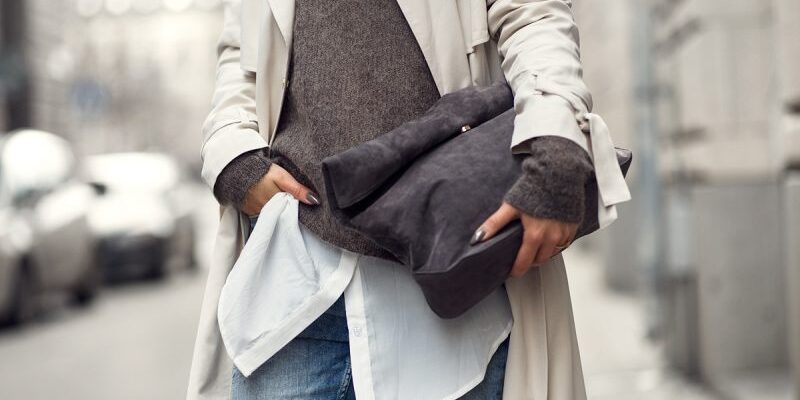Welcome to the art of layering, a skill that elevates your style game and ensures you’re prepared for any weather. Layering is not just a fashion statement; it’s a practical approach to dressing that allows you to adapt to changing temperatures while looking effortlessly chic.
This guide is here to walk you through the basics and beyond, ensuring you turn heads while staying comfortable, no matter the season.
Understanding the Basics – The Foundation of Layering
The journey into the layered look begins with understanding the basics. The foundation of any layered outfit is a comfortable, close-fitting garment. This could be a simple cotton T-shirt or a tank top.
The key is to choose something that feels like a second skin, offering comfort and a smooth base to build your layers. When selecting your base layer, consider the fabric.
Breathable materials like cotton or bamboo blends are ideal as they allow air circulation, keeping you from overheating as you add more layers.
The Middle Layer – Balancing Warmth and Style
Once your base is set, it’s time to add the middle layer, which is essential for warmth. This layer can vary greatly depending on the weather and occasion.
A denim jacket or a simple cardigan works wonders for a casual look. A woolen pullover or a fleece zip-up can be perfect if you’re dressing for colder weather. The middle layer is versatile; you can remove it if the day warms up or add a heavier piece if the temperature drops.
Also, consider the color and texture; these elements can add depth to your outfit. When shopping on a budget, focus on versatile pieces that can be mixed and matched with different base layers to create new looks without breaking the bank.
The Statement Piece – Outerwear That Pops
The outer layer is where you can truly make a statement. This is your chance to show off your style through a bold trench coat, a sleek blazer, or a rugged leather jacket.
This layer is not just about aesthetics; it also protects from the elements. When selecting outerwear, consider both functionality and fashion. Look for pieces with interesting details like unique buttons, patterns, or textures that stand out.
Remember, people often notice the outer layer first, so choose something that reflects your style while keeping you snug.
The Game-Changer – Embracing Heavy Long-Sleeve Shirts
Now, let’s talk about a game-changing element in layering: heavy long-sleeve shirts. These are not just any shirts; they are the bridge between your base and outer layers, adept at providing warmth without the bulk.
Whether it’s a rugged flannel, a chic chambray, or a classic Henley, these shirts add a functional yet stylish dimension to your outfit. They are perfect for those days when the weather can’t make up its mind, offering enough warmth when a jacket is too much but a T-shirt is too little.
The beauty of heavy long-sleeve shirts lies in their versatility. You can roll up the sleeves for a casual look or button them up for a more polished appearance.
They also come in various fabrics and patterns, allowing you to play with textures and colors. When layering with these shirts, consider the overall thickness and how they interact with your other layers.
A well-chosen, long-sleeve shirt can be the centerpiece of your outfit, so select one that complements your style and the rest of your wardrobe.
Accessorizing – The Final Touch in Layering
Accessorizing is an often-overlooked aspect of layering that can elevate your outfit from good to great.
Scarves, hats, and gloves aren’t just for warmth; they can add pops of color, texture, and personality to your ensemble. A patterned scarf can break up the monotony of a solid-colored outfit, while a beanie can add a playful touch to a more serious look.
When accessorizing, balance is key. Opt for simple, understated accessories if your layers are already bold and busy. Conversely, a statement accessory can add much-needed flair if your outfit is more minimalist.
Also, consider the functionality of your accessories. For instance, a wide-brimmed hat can be both a stylish accent and a practical way to shield your face from the sun.
Layering for Different Occasions
Layering is not just a one-style-fits-all approach; it can and should be adapted to suit various occasions. Layer a blazer over a lightweight sweater and a collared shirt for a business casual environment.
A leather jacket over a hoodie for a weekend outing can give off a relaxed yet put-together vibe. The key is to understand the dress code of the occasion and then use layers to fit in while still standing out.
Remember, the goal of layering is not just to pile on clothes but to create a functional, fashionable, cohesive look. Each layer should complement the others, creating an ensemble greater than the sum of its parts.
Layering is an essential skill for the fashion-conscious and practical dresser alike. It allows flexibility, creativity, and comfort, adapting to your daily life and the ever-changing weather.
By following these guidelines, you can master the art of layering, ensuring that you look and feel your best, no matter what the day brings. Embrace the layers, and let your style shine through!














Comments